Your Ultimate Resource for Expertly Caring for and Understanding Curly Hair Types
Identify and Define Your Unique Curl Pattern for Tailored Hair Care
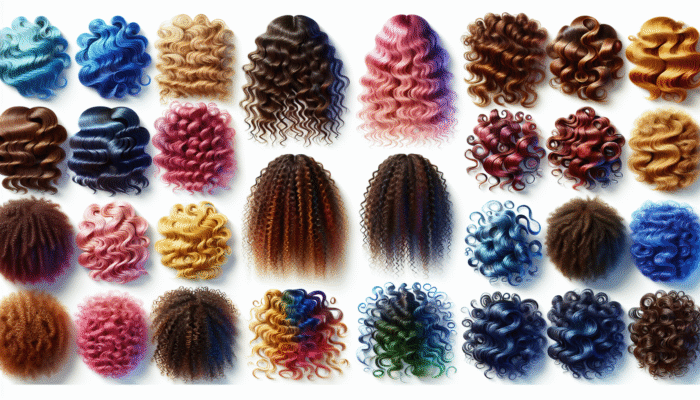
Accurately understanding and identifying your curl pattern is a critical foundation in crafting a hair care routine that caters specifically to your unique curls. Curly hair encompasses a breathtaking array of styles, from tightly coiled ringlets to soft, flowing waves. By pinpointing your curl type, you can significantly enhance your maintenance and styling techniques to cater perfectly to your hair's specific requirements. The widely accepted classification system categorises curl types from 1 (straight) to 4 (kinky coily), including multiple subcategories that exhibit various characteristics. For instance, type 3 curls are recognised for their lively and voluminous nature, whereas type 4 curls are marked by their dense and tightly coiled structure, often necessitating specialised care strategies to thrive.
To accurately determine your curl pattern, start by thoroughly wetting your hair and letting it air dry without any additional products. The natural shape your curls take as they dry will offer essential insights into your hair type. This understanding not only assists in selecting the most suitable products but also impacts your styling techniques. For example, if you discover that your curls fall under type 3, you may find that particular curl creams formulated for definition yield outstanding results. Conversely, type 4 hair generally thrives with richer moisturisers that effectively combat dryness. By customising your routine to align with your curl type, you can truly celebrate the innate beauty of your hair, allowing it to exude health and vitality.
Unlocking the Importance of Hair Porosity in Your Hair Care Journey
Understanding the concept of hair porosity is pivotal for achieving and maintaining healthy, vibrant curls. Porosity describes your hair’s capability to absorb and retain moisture, a critical aspect that profoundly influences your overall hair health. Typically, porosity is categorised into three key types: low, normal, and high. Low-porosity hair often resists moisture absorption, while high-porosity hair readily absorbs moisture but struggles to maintain it. Normal porosity hair finds an optimal balance, allowing for efficient moisture absorption and retention, essential for curl health.
To assess your hair’s porosity, conduct a simple water test. Place a strand of hair in a glass of water; if it sinks swiftly, you likely possess high porosity; if it floats for an extended period, you likely have low porosity; and if it remains suspended in the middle, you probably have normal porosity. Understanding your porosity level is vital for selecting the most effective products. For individuals with low-porosity hair, lightweight leave-in conditioners can be particularly beneficial, while those with high-porosity hair may find that heavier oils effectively seal in moisture. By tailoring your hair care regimen according to your hair's porosity, you can dramatically improve your curls' behaviour, enhancing their bounce and shine.
Evaluating Hair Density and Elasticity for Tailored Care Solutions
Assessing your hair's density and elasticity is essential for selecting the right products and techniques that meet your curls’ specific needs. Density refers to the number of hair strands on your scalp and is typically classified as low, medium, or high. Understanding your hair density is crucial for determining the correct amount of product to apply. For example, individuals with high-density hair usually require larger amounts of product to achieve their desired style, while those with low-density hair should choose lighter formulations to prevent their curls from becoming weighed down.
Elasticity indicates your hair's ability to stretch and return to its original shape. Healthy curls can typically stretch up to 50% of their length without breaking. To assess your hair's elasticity, wet a strand and gently tug on it; if it snaps quickly, your hair may be damaged and would benefit from strengthening treatments. High elasticity indicates resilient hair, while low elasticity may suggest that your curls require additional moisture and care. By thoroughly evaluating both density and elasticity, you can create a customised hair care routine that effectively addresses your curls’ unique needs, ensuring they remain lively and resilient.
Effective Techniques for Managing Frizz and Boosting Volume in Your Curls
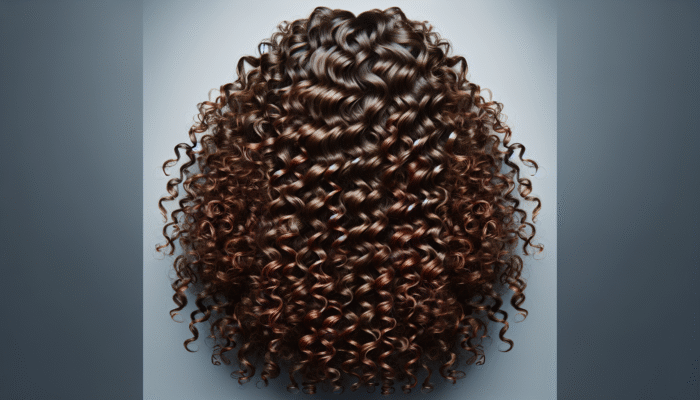
Frizz and volume are frequently encountered challenges faced by individuals with curly hair; however, with the right techniques, both can be effectively managed. The cornerstone of frizz control is ensuring adequate moisture. Curls that are sufficiently hydrated inherently experience less frizz, making the incorporation of deep conditioning treatments and leave-in conditioners crucial for maintaining their health. Furthermore, integrating anti-frizz serums or nourishing oils into your routine can coat the hair shaft, sealing in moisture and smoothing out flyaways for a polished, finished look.
When addressing volume, your approach may vary based on your curl type. Individuals with type 3 curls might enhance volume by using a diffuser while drying their hair or scrunching their curls to encourage lift. In contrast, those with type 4 curls seeking a more controlled appearance may find that applying styling creams that both define and weigh down the curls helps manage excessive volume. By understanding your hair's innate tendencies, you can tailor your styling methods accordingly, striking a harmonious balance between frizz control and volume enhancement.
Choosing the Most Effective Hair Products for Your Unique Curl Characteristics
Selecting the right hair products is vital for maintaining the health and vibrancy of your curls. Start with sulfate-free shampoos that cleanse without stripping your hair's natural oils. For curly hair, hydrating conditioners infused with ingredients like shea butter or coconut oil are crucial, as they provide essential moisture and nourishment. Understanding your specific curl type further guides your selection of styling products. For instance, gels are often effective for defining curls, while creams may soften hair and reduce frizz.
Experimentation plays a crucial role when choosing products; what works wonderfully for one curl type may not be suitable for another. Observing your hair's reaction to various products enables necessary adjustments. Consulting product reviews or seeking recommendations from curly hair communities can also provide valuable insights into what might work best for your individual requirements. By diligently selecting products tailored to your specific curl characteristics, you can establish a routine that showcases the beauty of your natural texture while providing it with the care it truly deserves.
Essential Techniques for Retaining Moisture in Curly Hair
Understanding the Essential Role of Water in Hair Hydration
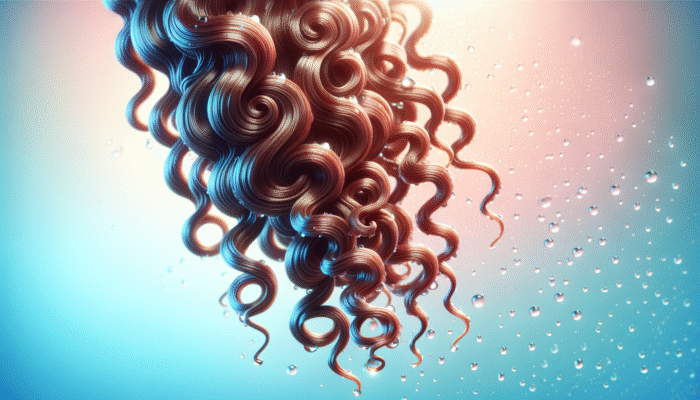
Water is often an underestimated asset in the quest for luscious, well-hydrated curls. Curly hair is generally drier than straight hair due to its unique structure; the natural oils produced by the scalp struggle to travel along the twists and turns of curls. This underscores the importance of hydration in maintaining the softness and elasticity of your curls. Regularly hydrating your hair not only enhances its overall appearance but also improves its health, significantly reducing the likelihood of breakage and frizz.
Incorporating water into your hair care routine goes beyond washing; consider misting your curls with water daily to sustain hydration. Additionally, utilising water-based products can dramatically elevate moisture levels. Ingredients such as aloe vera are particularly beneficial, as they effectively attract and retain moisture. By making water a focal point of your hair care regimen, you can dramatically enhance the vitality of your curls, ensuring they remain vibrant and resilient.
Maximising the Advantages of Humectants in Your Hair Care Routine
Humectants are powerful ingredients that draw moisture from the atmosphere, making them indispensable for sustaining the health of curly hair. Common humectants include glycerin, honey, and panthenol. These components excel particularly in humid conditions, drawing moisture into the hair shaft while beautifully defining curls.
When incorporating humectants into your hair care regimen, timing and environmental conditions are crucial considerations. In high humidity, products containing humectants can enhance the appearance of your curls, while in drier climates, they may not provide sufficient moisture on their own. Consider pairing humectants with occlusive agents, such as oils, to effectively seal in the moisture they attract. This combination creates a moisture-retaining barrier, ensuring your curls remain hydrated and healthy, regardless of the surrounding conditions.
Sealing in Moisture with Nourishing Oils for Optimal Curl Health
Oils play a vital role in locking in moisture and preventing dryness in curly hair. By forming a protective barrier around the hair shaft, oils help retain hydration, significantly enhancing the health and appearance of your curls. Popular oils for curly hair care include argan oil, jojoba oil, and coconut oil, each offering unique benefits. For instance, coconut oil is renowned for its ability to penetrate the hair shaft effectively, while argan oil provides a lightweight finish that won't weigh curls down.
When applying oils, consider your hair's porosity and density. For high-porosity hair, heavier oils can deliver the necessary sealing benefits, while low-porosity hair may respond better to lighter oils to avoid flattening the curls. Experimenting with different oils will help you determine what works best for your hair's individual needs. By incorporating the right oils into your routine, you can significantly enhance your hair's moisture retention, resulting in curls that look lush and full of life.
Selecting and Applying the Right Hair Products for Optimal Curl Management
Identifying the Best Shampoo and Conditioner for Your Unique Curls
Choosing the right shampoo and conditioner is essential for maintaining healthy, vibrant curls. Opt for sulfate-free formulas, as sulfates can strip the natural oils essential for curl health, leading to dryness and frizz. Look for shampoos that feature hydrating ingredients such as aloe vera and shea butter, which not only cleanse but also nourish your curls effectively.
Conditioners play an equally important role in your hair care routine. Seek out products rich in moisturising agents to help detangle and soften your hair. For deep conditioning, consider treatments that contain proteins and moisture-balancing ingredients that rejuvenate your curls and enhance their elasticity. By tailoring your shampoo and conditioner selections to your specific curl type and needs, you can establish a solid foundation for a successful hair care regimen, allowing your natural texture to truly shine.
The Transformative Effects of Leave-In Conditioners on Curly Hair
Leave-in conditioners are revolutionary products for curly hair, providing an additional layer of hydration that helps sustain moisture throughout the day. They enhance curl definition, reduce frizz, and contribute to a smooth finish. When selecting a leave-in conditioner, prioritise lightweight formulations that won’t weigh down your curls. Ingredients such as glycerin and natural oils are particularly advantageous, as they offer hydration and shine without leaving a greasy residue.
Proper application is crucial; ensure even distribution of the leave-in conditioner throughout damp hair, focusing on the ends where moisture tends to escape first. Techniques such as the “praying hands method” or scrunching can help your curls absorb the product effectively. By incorporating a high-quality leave-in conditioner into your routine, you not only improve the overall appearance of your curls but also ensure they remain hydrated and manageable throughout the day.
Choosing Styling Products That Elevate Your Curls to New Heights
Selecting the right styling products can significantly influence the appearance and behaviour of your curls. Gels, creams, and mousses serve distinct functions, making it essential to choose the one that best suits your specific curl type. Gels are often favoured for their ability to provide hold and definition, particularly for wavy or coiled hair. Opt for alcohol-free formulations to prevent dryness and unwanted crunchiness.
Curl creams are ideal for those seeking softness and moisture, offering a bouncy, natural look without the stiffness commonly associated with gels. Mousses provide an excellent option for adding volume and lightweight hold, making them particularly suitable for fine or medium-density curls. Don’t hesitate to experiment with various products and combinations until you find the perfect balance for your curls. The right styling products can significantly enhance your natural texture, resulting in a polished look that lasts throughout the day.
Detangling and Combing Techniques for Effortless Curly Hair Management
Choosing the Right Tools for Efficient Detangling
The tools you select for detangling and combing are critical for maintaining the health of your curly hair. Opt for wide-toothed combs and brushes specifically designed for curly hair, as these tools effectively minimise breakage and damage. Avoid fine-toothed combs, which can lead to snags and tears, resulting in unnecessary hair loss and compromised curl integrity.
When detangling, consider using your fingers for the gentlest approach. Begin from the tips of your hair and gradually work your way upwards towards the roots, easing out knots without pulling. This technique not only prevents breakage but also encourages healthy hair growth. By investing in the right tools and employing gentle detangling methods, you can preserve the integrity of your curls while keeping them manageable and vibrant.
Wet or Dry: Finding Your Ideal Detangling Method
The ongoing debate about whether to detangle curly hair when wet or dry often hinges on personal preference and hair type. Many experts recommend detangling hair while it is still wet, as this can facilitate a smoother and less painful experience. Applying a generous amount of conditioner or a specialised detangling spray can further ease the process, providing slip and making it easier to comb through.
However, some individuals with highly textured hair find that detangling dry curls helps maintain their shape and definition. If you prefer this method, ensure your hair is well-moisturised to prevent breakage. Ultimately, the best approach is to experiment and determine what works best for your curls, adapting your technique to preserve the health and vitality of your hair.
Utilising Sectioning for Effective and Efficient Detangling
Sectioning your hair is an incredibly effective strategy for detangling curly hair. By dividing your hair into manageable sections, you can focus on one area at a time, ensuring thorough detangling while minimising the risk of breakage. Consider using clips or hair ties to secure each section as you work through your hair.
Start at the back and progress toward the front, allowing you to tackle the more challenging tangles first. This method not only expedites the detangling process but also helps you identify any problematic areas that may require additional care. By incorporating sectioning into your routine, you can significantly enhance your detangling efficiency, ensuring your curls remain healthy and well-maintained.
Applying Conditioner for a Smooth Detangling Experience
Utilising a generous amount of conditioner during the detangling process is crucial for preventing breakage and ensuring a smooth experience. Conditioner acts as a slip agent, allowing the comb or your fingers to glide through your hair rather than getting caught on tangles. Opt for a thick, creamy formula that delivers ample moisture to your curls as you work through knots.
When applying conditioner, be particularly mindful of the ends, where tangles tend to be most prevalent. Allow the conditioner to sit for a few minutes to further soften the hair, making detangling easier. By prioritising the use of conditioner in your detangling routine, you can maintain the health of your curls while ensuring they remain beautiful and defined.
Protective Styling Techniques to Safeguard Your Curly Hair
Exploring the Benefits of Braids and Twists for Hair Protection
Braids and twists are exceptional protective styles for curly hair, offering numerous benefits. By tucking away your curls, these styles help minimise exposure to environmental stressors, thereby reducing the risk of damage and breakage. Moreover, protective styles can promote healthy hair growth by decreasing manipulation and allowing your hair to rest and rejuvenate.
Incorporating braids or twists into your hair care regimen can also provide a stylish and versatile aesthetic. From box braids to flat twists, the options are virtually limitless, each presenting a unique look. Furthermore, these styles can be easily accessorised with beads or scarves, enabling a personalised touch. Embracing braids and twists not only protects your curls but also opens the door to creative expression, celebrating the beauty of your natural texture.
Safely Integrating Wigs and Weaves into Your Hair Care Routine
Wigs and weaves serve as fantastic options for protective styling, allowing you to switch up your look while safeguarding your natural curls. However, proper care is essential to prevent damage. Ensure that any wig or weave is installed correctly and allows your natural hair to breathe. Avoid tight styles that can create tension on your scalp, potentially leading to traction alopecia over time.
When selecting wigs, opt for those made from human hair to achieve a more authentic look and feel. Additionally, it’s crucial to care for your natural hair beneath the wig or weave by maintaining a consistent washing and moisturising routine. This diligent care ensures your curls remain healthy while you enjoy the versatility that wigs and weaves offer, allowing you to embrace a variety of styles without compromising the integrity of your natural hair.
Implementing Overnight Protective Styles for Enhanced Hair Health
Overnight protective styles can significantly minimise frizz and breakage while you sleep, ensuring your curls wake up looking fresh and defined the next day. Consider utilising a loose pineapple or a gentle braid to keep your curls contained without creating tension. This technique protects your curls from friction against your pillowcase, which can contribute to frizz and dryness.
Moreover, investing in a silk or satin pillowcase can enhance your protective styling efforts. These materials create less friction than standard cotton, allowing your curls to glide smoothly while you sleep, thereby reducing the risk of damage. By incorporating overnight protective styles into your routine, you can effectively maintain the health and appearance of your curls, ensuring they wake up vibrant and ready to shine.
Strategies for Heat Styling and Preventing Damage
Minimising Heat Exposure for Healthier Curls
Excessive heat exposure can cause significant damage to curly hair, leading to dryness and harm over time. Reducing the frequency of heat styling is essential for preserving healthy curls. Whenever feasible, opt for air-drying or heat-free styling methods that accentuate your natural texture. If heat styling is unavoidable, aim for lower temperatures and limit heat exposure to special occasions to protect your curls.
Before applying any heat, incorporate a heat protection spray or serum to shield your hair from potential damage. Additionally, consider using heat styling tools specifically designed for curly hair, which often feature temperature control settings for added safety. By prioritising heat reduction, you can safeguard the integrity of your curls, allowing them to remain healthy and vibrant for years to come.
Incorporating Heat Protectants into Your Styling Routine
Heat protectants are a crucial part of your styling routine if you plan to use heat tools on your curls. These products create a protective barrier around the hair shaft, helping to prevent damage and moisture loss. Look for heat protectants containing ingredients such as silicones, which can provide a smooth finish and enhance shine.
When applying heat protectants, ensure even distribution throughout your hair, paying particular attention to sections that will be styled with heat. Allow the protectant to dry completely before using your heat tools to guarantee maximum effectiveness. By incorporating heat protectants into your routine, you not only safeguard your curls but also enhance their overall appearance, allowing them to shine with health and vitality.
Employing Safe Techniques for Heat Styling Your Curls
Adopting safe techniques for heat styling is essential for minimising damage to your curly hair. Begin by ensuring your hair is completely dry before using heat tools, as styling wet hair can cause severe harm. Whenever possible, utilise a diffuser attachment on your blow dryer to distribute heat evenly, thereby reducing the risk of hot spots that may cause injury.
Consider using the lowest effective temperature for your styling needs, and avoid passing over the same section multiple times. This practice helps to minimise the risk of heat damage while preserving the natural curl pattern. By employing safe heat styling techniques, you can maintain the integrity of your curls, allowing them to flourish while still enjoying the versatility that heat tools can provide.
Selecting the Right Heat Styling Tools for Curly Hair
Choosing the appropriate heat styling tools is vital for maintaining the health of your curly hair. Invest in high-quality tools equipped with adjustable temperature settings, which allow you to select the best heat level for your particular curl type. Ceramic and tourmaline tools are excellent options, as they distribute heat evenly and help retain moisture during styling.
Avoid using tools that generate excessive heat, as they can cause irreversible damage to your curls. Instead, focus on selecting styling tools that include features designed to protect your hair, such as automatic shut-off and heat-resistant handles. By carefully choosing your heat styling tools, you can achieve your desired style while safeguarding the health and vitality of your beautiful curls.
Strategies for Length Maintenance and Encouraging Healthy Hair Growth
The Crucial Role of Regular Trims for Curly Hair Health
Regular trims are a cornerstone of sustaining healthy curly hair. While it may appear counterproductive to cut your hair when aiming for length, trimming is essential for eliminating split ends and preventing further damage. Without routine maintenance, split ends can travel up the hair shaft, leading to more significant breakage and an overall unhealthy appearance.
The frequency of trims should be determined by your hair’s growth rate and overall condition, but a general guideline suggests scheduling them every 6-8 weeks. This practice ensures that your curls remain bouncy and full of life. Arranging regular trims with a stylist experienced in working with curly hair can also help achieve a shape that enhances your natural texture, allowing your curls to thrive and look their absolute best.
Effective Techniques for Trimming Curly Hair for Optimal Results
Trimming curly hair requires a thoughtful approach to preserve the integrity of your curls. If you opt to trim at home, consider using the “dusting” technique, where only the very tips of the hair are snipped to eliminate split ends without sacrificing overall length. This method allows you to maintain your length while refreshing the appearance of your curls.
When visiting a stylist, ensure they are experienced in cutting curly hair, as the techniques employed differ significantly from those for straight hair. Methods such as dry cutting can be advantageous, as they allow the stylist to see your natural curl pattern and cut accordingly. By employing the right trimming techniques, you can enhance the health and appearance of your curls, ensuring they remain vibrant and beautiful.
Maintaining Your Curls Between Trims for Optimal Health
Taking care of your curls between trims is essential for preserving their health and appearance. Focus on establishing a consistent hair care routine that incorporates regular deep conditioning treatments and hydration. Integrate oils or serums that provide extra moisture and shine, keeping your curls nourished and protected.
Be observant of how your hair responds to various products and adjust your routine as necessary. If you notice increased dryness or breakage, consider modifying your products or techniques. Simple adjustments, such as sleeping on a silk pillowcase or using a satin scarf at night, can also shield your curls from friction and damage. By actively caring for your curls between trims, you can ensure they remain healthy, vibrant, and full of life.
Common Inquiries Regarding Curly Hair Care Addressed
How often should I wash my curly hair for optimal health?
The frequency of washing curly hair typically depends on individual hair needs. Many individuals with curly hair find that washing once a week or every ten days helps maintain moisture without stripping essential natural oils, promoting overall hair health.
Is it advisable to use standard shampoo on curly hair?
Using standard shampoo, particularly those containing sulfates, can severely dry out curly hair. It's best to opt for sulfate-free shampoos specifically formulated for curly textures to maintain hydration and health.
What are the best oils for promoting curly hair health?
Some of the most effective oils for curly hair include argan oil, coconut oil, and <a href=”https://limitsofstrategy.com/essential-hydration-must-have-hair-oils-for-uk-weather/”>jojoba oil</a>. These oils provide essential hydration, seal in moisture, and enhance shine, promoting overall hair health and vitality.
How can I effectively reduce frizz in my curls?
To minimise frizz, ensure your curls are adequately hydrated by using leave-in conditioners and serums. Additionally, using a microfiber towel or an old t-shirt for drying your hair can significantly help reduce frizz and maintain curl definition.
Is it necessary to use heat protectants when styling my hair?
Using heat protectants is crucial when styling with heat tools. They create a protective barrier that helps prevent heat damage and moisture loss, preserving the health and integrity of your curls.
What is the best method for detangling curly hair efficiently?
The most effective method for detangling curly hair is to do so when it's wet and saturated with conditioner. Use a wide-toothed comb or your fingers, working from the tips to the roots to avoid breakage and ensure smooth detangling.
How can I enhance my curls without using heat styling?
To amplify your curls without heat, consider using curl creams or gels that define and hold curls in place. Techniques such as scrunching and braiding can also help create beautiful, natural curls without the use of heat.
Are protective styles beneficial for the health of curly hair?
Yes, protective styles such as braids and twists can help reduce manipulation and shield your curls from environmental stressors, promoting healthier growth and preventing damage.
How often should I schedule trims for my curly hair maintenance?
Regular trims every 6-8 weeks are recommended for curly hair to eliminate split ends and maintain the shape of your curls, ensuring they stay healthy and vibrant.
Which products should I avoid when caring for curly hair?
Avoid products containing sulfates, heavy alcohols, or silicones, as these can lead to build-up and dryness. Instead, opt for gentle, hydrating formulas that nourish curls without stripping their moisture.
Connect with us on Facebook for More Tips!
This article: Advanced Tips for Curly Hair Maintenance: Essential Techniques first appeared on Amitys Hair Salon.
The Article Curly Hair Maintenance: Essential Advanced Tips and Techniques Was Found On https://limitsofstrategy.com
The Article Curly Hair Maintenance: Advanced Tips for Optimal Care First Appeared ON
: https://ad4sc.com

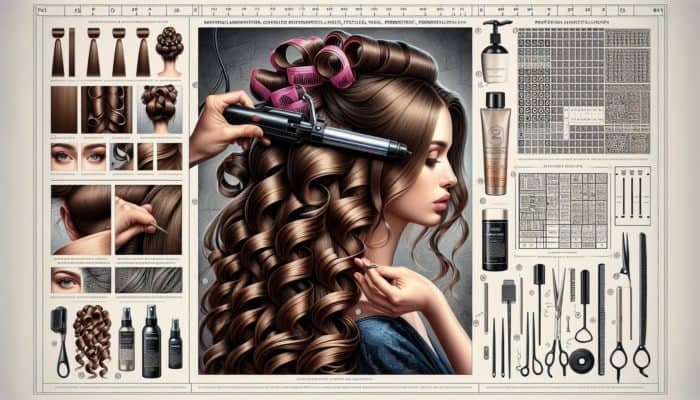

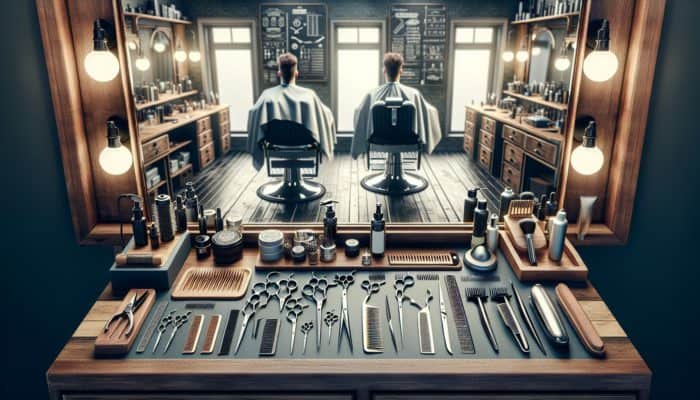











Leave a Reply